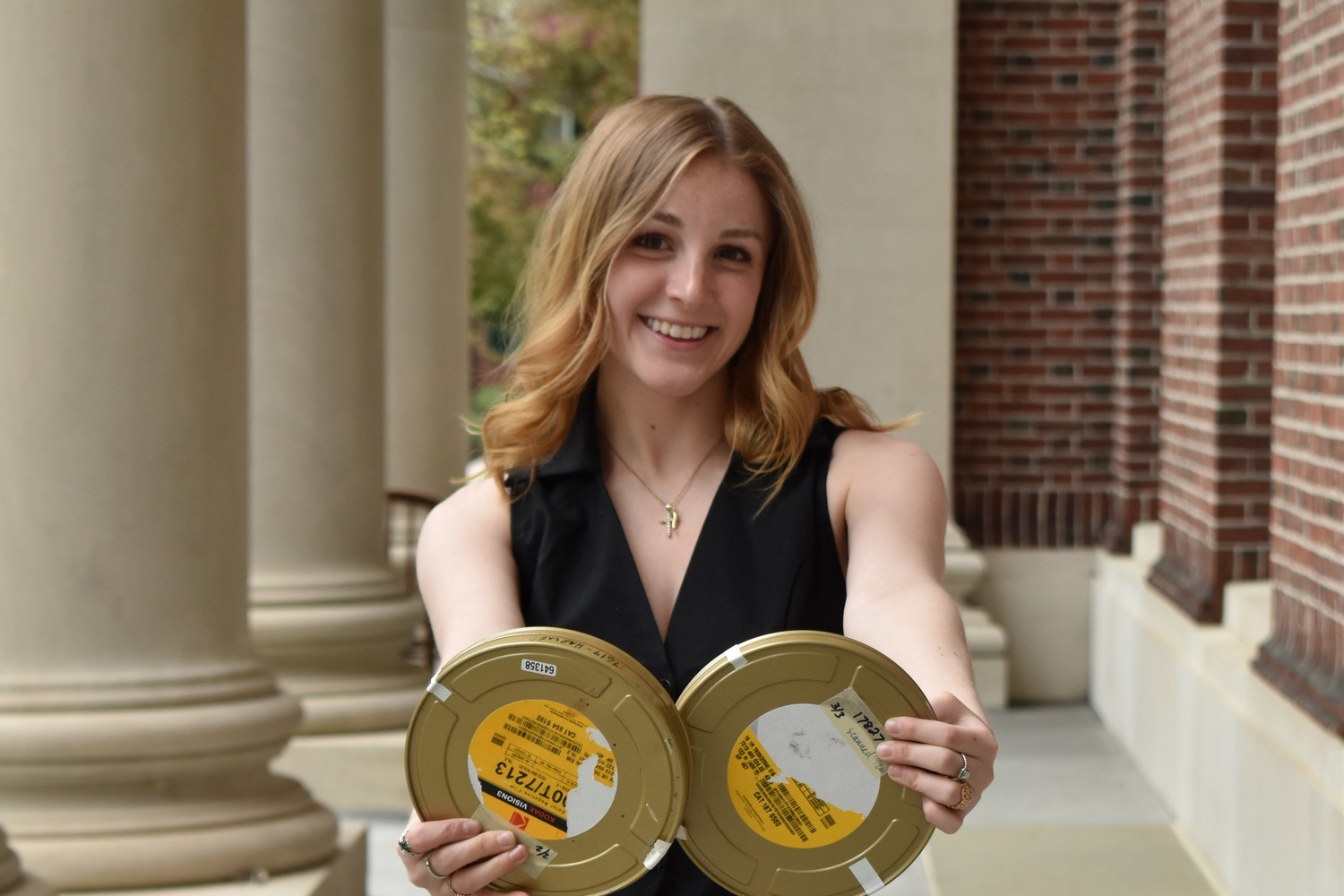
News
Harvard Quietly Resolves Anti-Palestinian Discrimination Complaint With Ed. Department

News
Following Dining Hall Crowds, Harvard College Won’t Say Whether It Tracked Wintersession Move-Ins

News
Harvard Outsources Program to Identify Descendants of Those Enslaved by University Affiliates, Lays Off Internal Staff

News
Harvard Medical School Cancels Class Session With Gazan Patients, Calling It One-Sided

News
Garber Privately Tells Faculty That Harvard Must Rethink Messaging After GOP Victory
Artist Profile: Samantha M. Galvin ’24 on Her Film ‘Don’t Speak Ill of the Dead’ and Tracing Familial Connections

Experimental and documentary filmmaker Samantha M. Galvin ’24 has always appreciated art, but never saw it as a means to reflect on her personal life. Even during her time as a visual artist, she did not experience the same emotional connection to her work that many artists do. That all changed when she came across film at Harvard. She entered a world where she could channel her emotions and explore the events and relationships that have shaped her life.
A concentrator in the department of Art, Film, and Visual Studies, Galvin has spent the better part of the past year working with 16mm film to tackle her thesis project, titled “Don’t Speak Ill of the Dead.” The film explores the maternal influences in her life across generations, illustrating their complexities and nuances. In making this project, Galvin did not always know that this was the story she wanted to tell.
“I saw my grandma pass away in the start of my junior year,” Galvin said in an interview with The Crimson.
“And basically, as soon as she passed away, I was like, ‘I need to make some sort of film about her relationship with my grandfather, because the stories we were told when we were kids were always so cinematic.’”
Galvin added that she actually attempted to make an animation of their love story during her junior fall, but was ultimately unable to fully express her thoughts in a semester-long project. However, with the opportunity to dedicate a year to her thesis, she had more time to refine her vision for the film.
As she developed her proposal, Galvin compiled various images and stories that served as the building blocks for her thesis. Putting the project together was a cathartic experience, enabling her to reflect on her own emotions and familial connections.
Eventually, what was initially intended as a cinematic retelling of her grandparents’ love story evolved into an exploration of Galvin’s relationship with her mother and her mother’s relationship with her grandmother — delving into shared experiences and stories that transcend time.
“I realized how similar I was to my mom when she started talking about her mom, and I realized that I had a very similar relationship to my grandma as she did to her mom,” Galvin explained.
Galvin’s journey with film started her sophomore year when she enrolled in Art, Film, Visual Studies 173: “Visual Music” with Professor Laura Frahm. This course sparked her interest in the medium and inspired her to seek out other course offerings in the AFVS department.
It was there she fell in love with film. However, her love affair with the medium truly blossomed in her junior spring when she took Art, Film, and Visual Studies 152F: “The Bolex: Working in Film,” taught by Professor Robb Moss at the time. This course, centered on 16mm film, provided her the opportunity to immerse herself in the unique qualities of traditional film that had always captivated her.
“My very first roll of film, everything was out of focus, because I didn’t know how to set the diopter. But then the next time I shot, I fell in love with the shooting process,” she explained.
“I feel like with the Bolex, color film possesses this color quality that is really good at showcasing memory, and I really liked to make films about psychological processes. I just feel like film is better at capturing that feeling than digital.”
She goes on to say that with 16mm, it was not so much the medium itself that propelled her into filmmaking; rather, it was Moss who truly believed in her creative ability to seriously pursue filmmaking beyond a mere side project.
When asked what she would like audiences to take away from her films, Galvin challenged the notion of audiences often forcing the director into a position where they have to provide definitive answers. Unlike in other artistic or creative mediums like painting or poetry where consumers often interpret the art how they see fit, movie-watchers tend to place a lot of responsibility on the filmmaker to understand a film, thus erasing any sense of ambiguity.
“People should look at film as if it’s just one perspective, rather than the director or the storywriter being the god of the piece,” she said.
Galvin’s work in film not only reflects her artistic growth but also emphasizes the importance of fostering a culture at Harvard in which students perceive art to be something more than just a hobby but also a legitimate intellectual pursuit.
“I think that we should encourage all forms of intellectualism, not just the traditional ones here. So support your fellow AFVS and other art students here at the school,” she concluded.
—Staff writer Lydia H. Fraser can be reached at lydiafraser@thcrimson.com.
Want to keep up with breaking news? Subscribe to our email newsletter.
